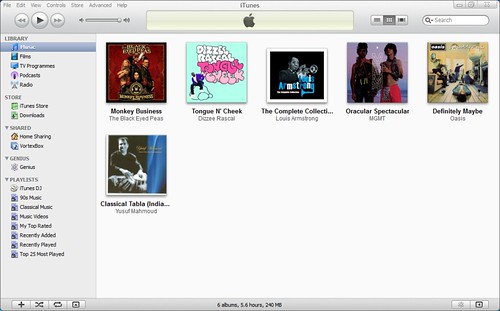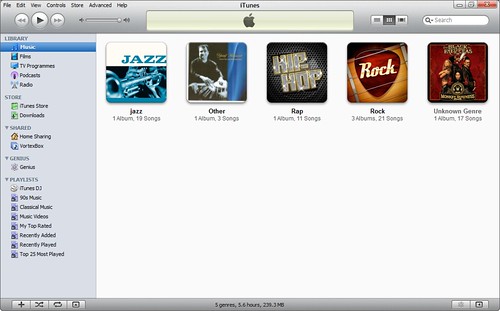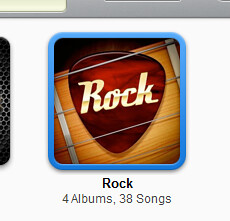The importance of names, genre and year information in MP3s
January 27, 2011 in tags by Dan Gravell
Where does the album and artist name information, displayed in your music player, come from? In most cases this information is stored within the music files themselves in what are known as 'tags'. Your music player, such as iTunes, Windows Media Player, Sonos, Squeezebox and others, inspects your music files, finds these tags, and uses the tags to arrange your music collection. Therefore, by changing the tags, you can affect how the music is displayed in your music player. This is the fundamental truth of organizing your music, at some level you will probably be editing your music tags.
Let's take a look at how changing tags affect your music player. I'll use iTunes in this example. Here's our start state:

A small library (with album art for rare recordings added by bliss, of course!).
The simplest possible change is to change just the album name or artist name for an album. In this tenuous example, I change Oasis's name to be all upper case. It then appears in iTunes as so:

Now something more useful. Look at these genres:

As usual, disorganized and useless for building playlists. Let's say I re-classify the Black Eyed Peas album as 'Rock' (ok, tenuous again!):

Now, a fuller genre list means it's easier to navigate music, rather than having just an 'Unknown genre'.
So how do you change tags?
A music tagger is the common way of changing tags. Typically, a music tagger gives you a file-by-file view of your music collection, and lists the tags that exist within. This way, you can select the files you want to change, update the tags how you want them and you're done. bliss also allows changing of album name, artist name, genre and year which edits your music files in the same way as a tagger.
So that's it?
These are the fundamental techniques which can be employed over and over again, in ever larger libraries. The exact tags that are changed, and sometimes their format, is dependent on your choice of music player (of which there may be multiple). Unfortunately, simply changing tags begins to get less and less efficient the larger the library you have. It becomes difficult to maintain a consistent tagging scheme the more music you have to tag.
With bliss, I'm working on new ideas to help you maintain control and consistency throughout your music library whether you have five albums or fifty-thousand.

